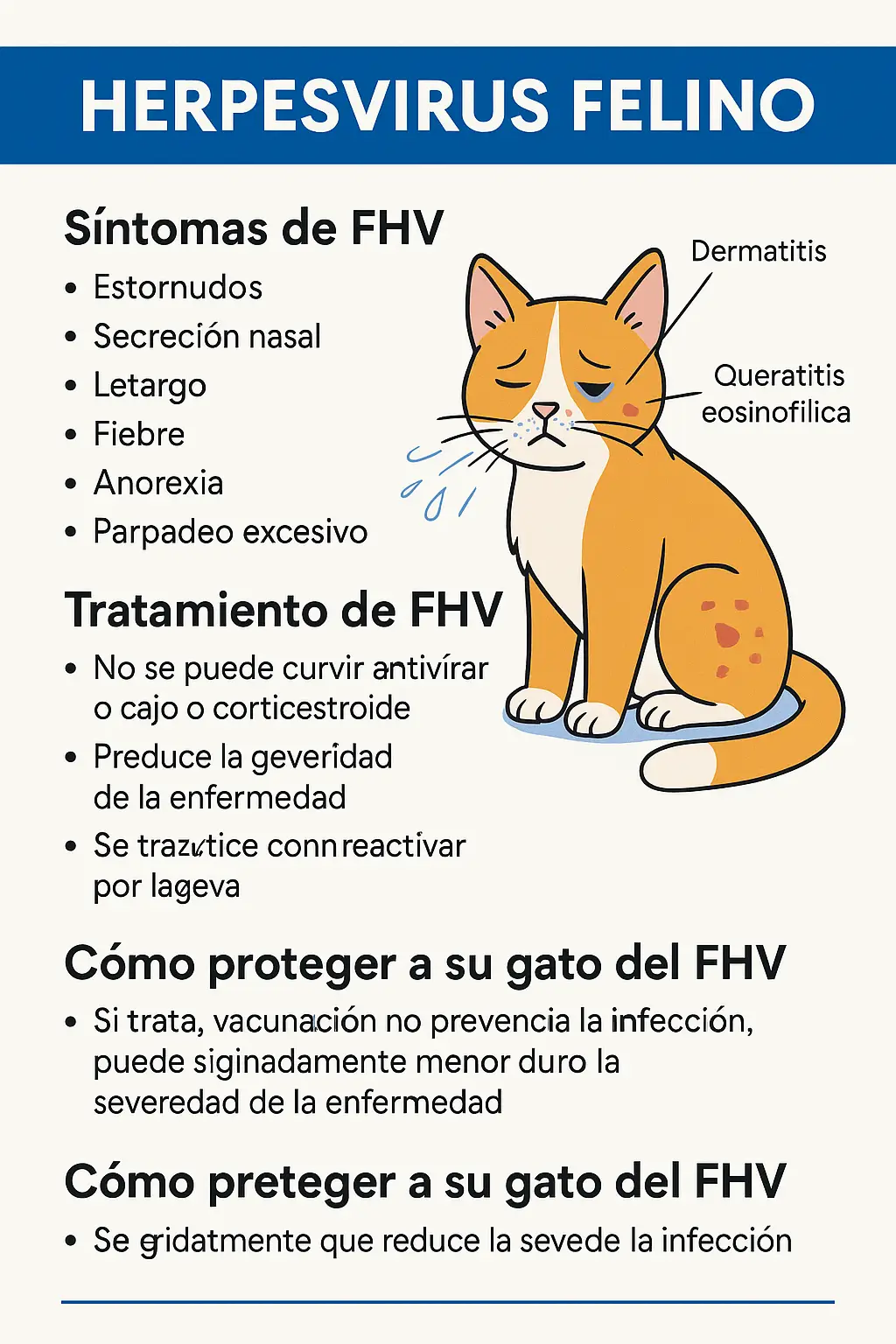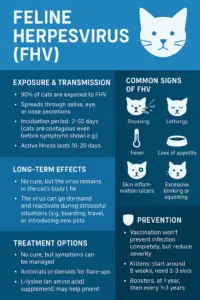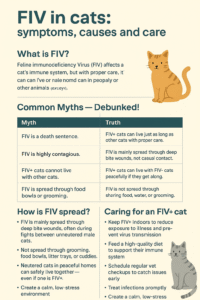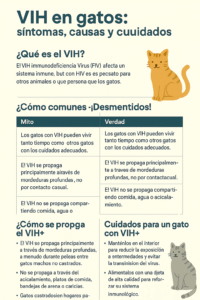Thank you to our partners whose support makes our work possible




Cats diseases
Herpes (FHV-1)
🐱 Feline Herpesvirus (FHV-1) – What You Need to Know
💡 Exposure & Transmission:
~90% of cats are exposed to FHV.
Spread through saliva, eye, or nose secretions.
Incubation period: 2–5 days (cats are contagious even before symptoms show).
Active illness lasts 10–20 days.
⚠️ Common Signs of FHV:
Sneezing, nasal discharge
Lethargy, fever, loss of appetite
Skin inflammation/ulcers (dermatitis)
Eye issues: excessive blinking/squinting
May lead to eosinophilic keratitis – chronic corneal inflammation
🧬 Long-Term Effects:
No cure – virus remains in the cat’s body for life
Can go dormant and reactivate during stressful situations (e.g., boarding, travel, new pets)
💊 Treatment Options:
No cure, but symptoms can be managed
Antivirals or steroids for flare-ups
L-lysine (amino acid supplement) may help prevent outbreaks
Lifelong meds needed if eosinophilic keratitis develops
🛡️ Prevention:
Vaccination won’t prevent infection completely, but reduces severity
Kittens: start around 8 weeks, 2–3 shots
Boosters: at 1 year, then every 1–3 years
FIV
FIV in cats: symptoms, causes and care
Feline Immunodeficiency Virus (FIV) affects a cat’s immune system, but with proper care, FIV+ cats can live long, healthy lives. Here’s everything you need to know.
What is FIV?
FIV is a slow-acting virus that weakens a cat’s immune system over time. It’s similar to HIV in humans but cannot be transmitted to people or other animals (except cats).
Common Myths — Debunked!
Myth
Truth
FIV is a death sentence. ❌ False
FIV+ cats can live just as long as other cats with proper care. ✅ True
FIV is highly contagious. ❌ False
FIV is mainly spread through deep bite wounds, not casual contact. ✅ True
FIV+ cats can not live with other cats. ❌ Not necessarily
FIV+ cats can live with FIV- cats peacefully if they get along and don’t fight. ✅ True
FIV is spread through food bowls or grooming. ❌ Not true
FIV is not spread through sharing food, water, or grooming. ✅ True
How is FIV spread?
- FIV is mainly spread through deep bite wounds, often during fights between unneutered male cats.
- Not spread through grooming, food bowls, litter trays, or cuddles.
- Neutered cats in peaceful homes can safely live together — even if one is FIV+.
Symptoms of FIV
Many FIV+ cats live without symptoms for years. When signs do appear, they may include:
- Dental issues or gum inflammation
- Skin or eye infections
- Lethargy or fever
- Weight loss or poor coat condition
- Recurring respiratory or urinary infections
Caring for an FIV+ cat
FIV+ cats thrive with the right care:
- Keep them indoors to reduce exposure to illness and prevent virus transmission
- Feed a high-quality diet to support their immune system
- Schedule regular vet checkups to catch issues early
- Treat infections promptly
- Create a calm, low-stress environment
Can FIV+ cats be adopted or fostered?
Yes — They need love not pity, and they make wonderful companions. FIV+ cats are affectionate, calm, and incredibly loving. They just need:
- a stable, indoor home
- regular vet care
- understanding and patience
You’ll be giving a cat who’s often overlooked a chance at a full and happy life.
Why FIV+ cats deserve a chance
- Often overlooked — but make amazing companions
- Can live with other cats in stable households
- Ideal for permanent fostering
- Deserve love and dignity, just like any other cat
In summary
FIV is manageable. It doesn’t stop a cat from living a long, joyful life — and it shouldn’t stop you from opening your heart and home.






